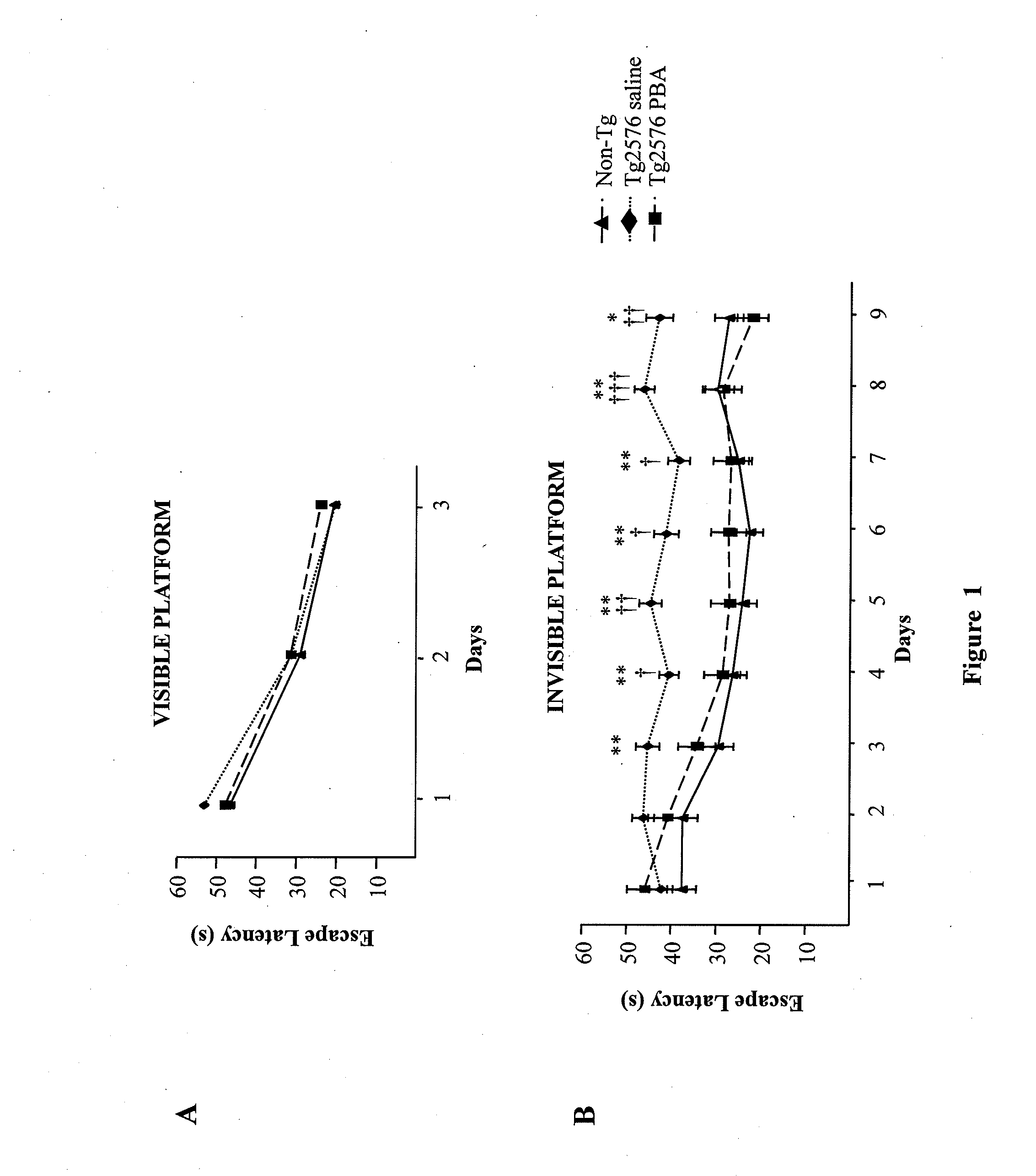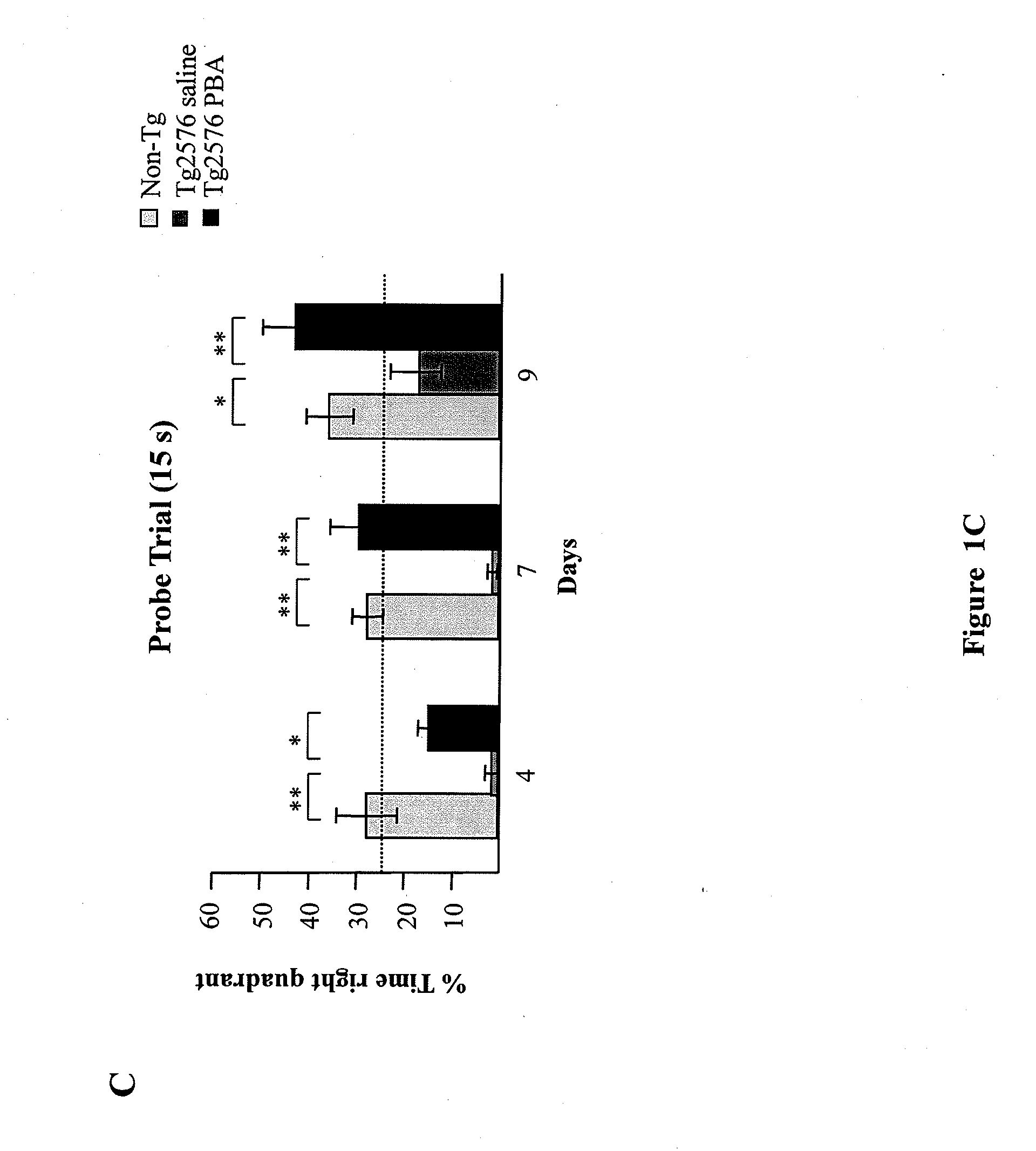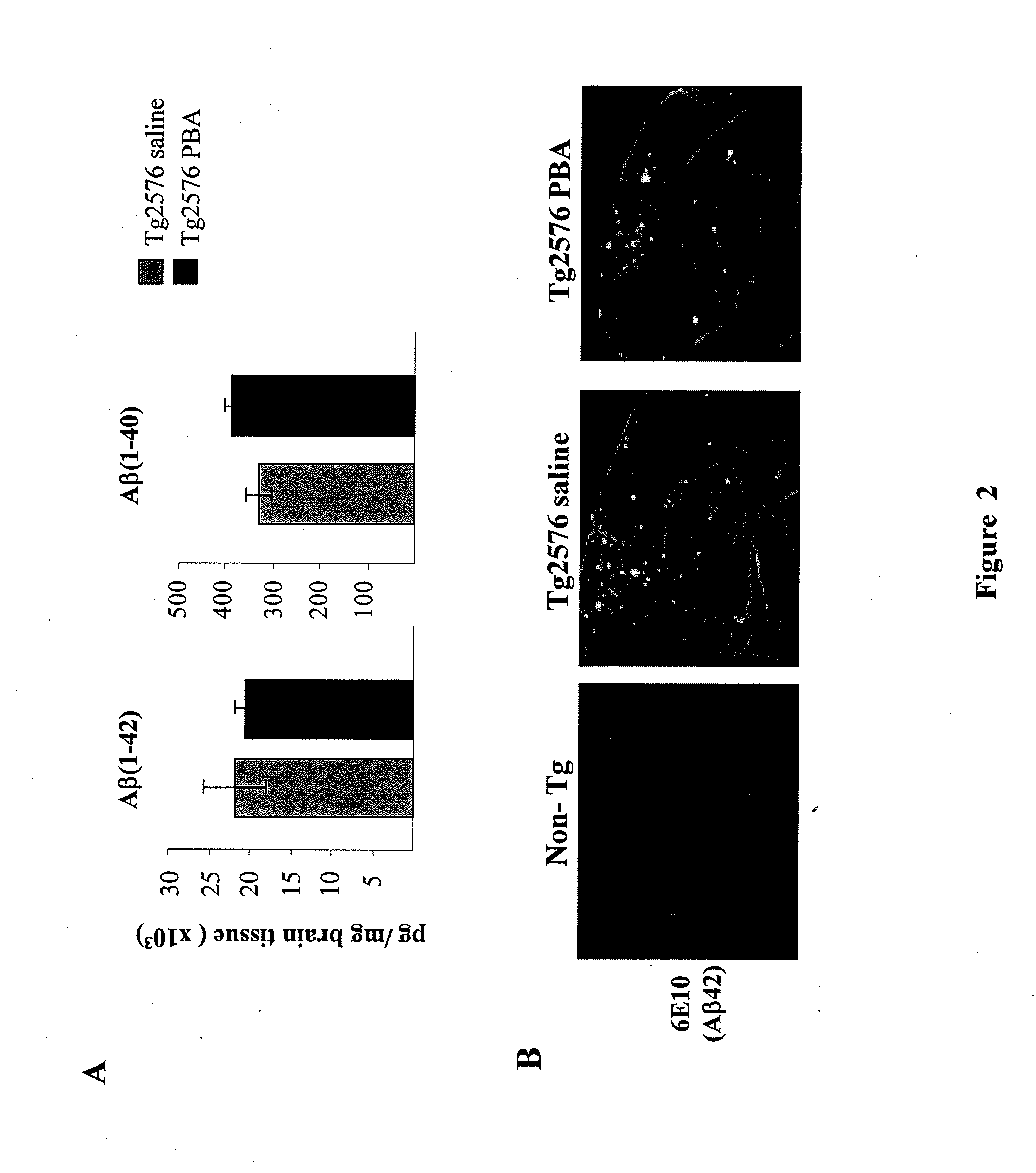Novel uses for 4-phenylbutyrate (4PBA) and its pharmaceutically acceptable salts
a technology of phenylbutyrate and phenylbutyrate, which is applied in the field of biotechnology, can solve the problems of er not always functioning with appropriate accuracy, accumulating badly folded proteins, and “stressing” the situation of er
- Summary
- Abstract
- Description
- Claims
- Application Information
AI Technical Summary
Benefits of technology
Problems solved by technology
Method used
Image
Examples
example 1
Murine Animal Experimentation Model and Treatment Thereof
[0079]We used Tg2576 transgenic mice with Alzheimer's Disease expressing the 695-aa human APP isoform which contains the double APPswe Swedish mutation [(APP695) Lys670→Asn, Met671→Leu] triggered by a cryonic hamster promoter. In the Tg2576 transgenic mice suffering from Alzheimer's disease used in the experimental murine model, the Aβ peptide content in the brain accumulates exponentially between their 7th and 12th months of life. The mice thus manipulated showed deterioration of the memory function when they were subjected to the Morris aquatic maze test when they reached the age between 12 and 15 months. Therefore 16 months old Tg2576 transgenic mice females were treated once a day intraperitoneally with 200 mg / kg 4PBA or its vehicle during 5 weeks. To do this a 4PBA solution was prepared titrating equimolecular amounts of 4-phenylbutyric acid (Sigma) and sodium hydroxide at a pH: 7.4. A group of normal mice, not geneticall...
example 2
Morris Water Maze (MWM)
[0080]The Morris water maze was used to evaluate the operational and reference memory functions in Tg2576 transgenic mice treated with 4 PBA as described previously in the literature (Ribe et al., 2005). Groups of Tg2576 female mice treated with 4PBA (n=6), vehicle (n=7), and non-transgenic litter siblings (n=10) were subjected to spatial learning and memory tests using the Morris water maze when they became 16 months old. The maze consisted of a circular pool filled with water at 20° C. The mice received prior training in a pool with a visible platform during 3 consecutive days (8 tests per day) being able to swim towards a platform raised above the water level. The training with hidden platform took 9 consecutive days (4 tests per day) during which all mice were allowed 60 seconds to find the platform submerged 1cm below the water surface. Those mice that could not find the platform were guided to it. All mice were allowed a 20 second rest period on the plat...
example 3
Method to Determine Aβ Levels
[0083]Since 4PBA treatment showed to clearly benefit the memory acquisition and retention process, the next aspect was to explore the effect of the Aβ levels and tau pathology in Tg2576 transgenic Mice. Mice were sacrificed 24 hours after performing the last test in the Morris water maze. The cortex and hippocampus were sectioned and used to perform biochemical analyses. Then the levels of Aβ40 and Aβ42 in the cerebral cortex were analyzed by a sandwich type ELISA test.
[0084]The cerebral cortexes were homogenized in a buffer containing 5 M guanidine HCl and 50 mM Tris HCl at a pH=8, protease inhibitors (Roche's CompleteTM Protease Inhibitor Cocktail), and phosphatase inhibitors (0.1 mM Na3VO4, 1 mM NaF). The homogeneates thus obtained were sonicated during 2 min and spun at 100,000×g during 1 h. Aliquots of the supernatant were freeze-dried at −80° C. and the protein concentration determined using the Bradford method with the Bio-Rad kit. Aβ42 levels wer...
PUM
| Property | Measurement | Unit |
|---|---|---|
| concentration | aaaaa | aaaaa |
| speed | aaaaa | aaaaa |
| stress | aaaaa | aaaaa |
Abstract
Description
Claims
Application Information
 Login to View More
Login to View More - R&D
- Intellectual Property
- Life Sciences
- Materials
- Tech Scout
- Unparalleled Data Quality
- Higher Quality Content
- 60% Fewer Hallucinations
Browse by: Latest US Patents, China's latest patents, Technical Efficacy Thesaurus, Application Domain, Technology Topic, Popular Technical Reports.
© 2025 PatSnap. All rights reserved.Legal|Privacy policy|Modern Slavery Act Transparency Statement|Sitemap|About US| Contact US: help@patsnap.com



